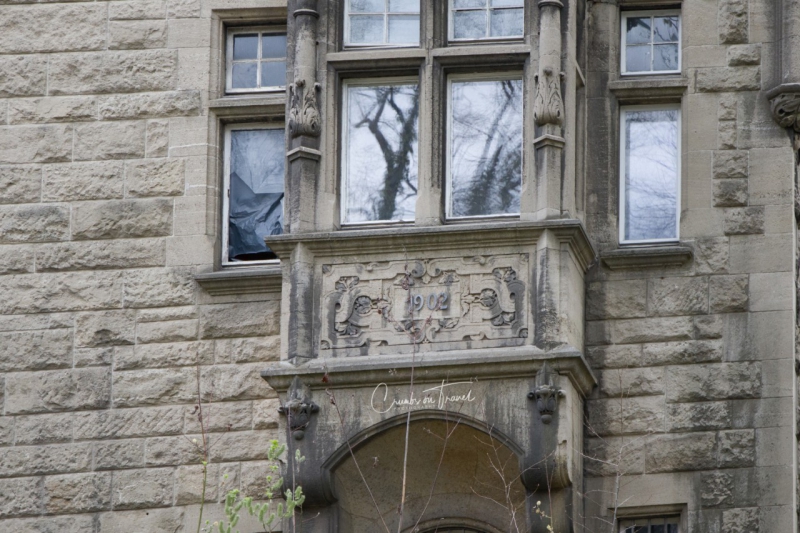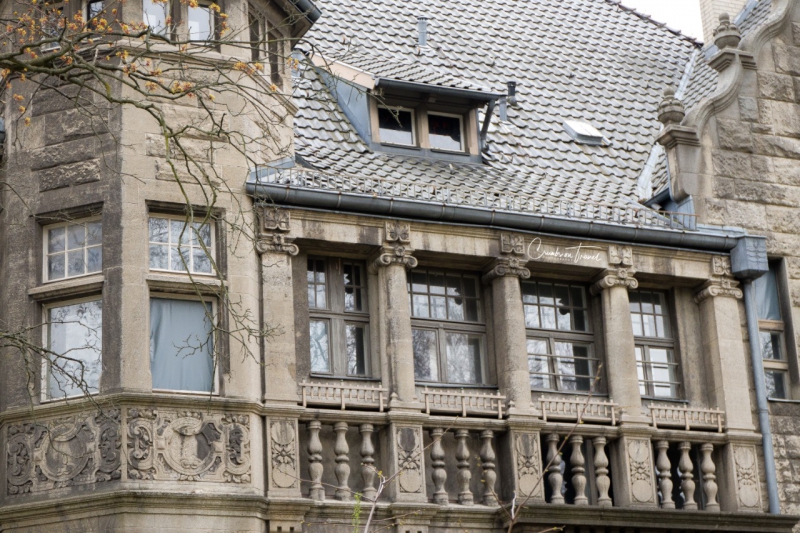Abandoned Villa Noelle – Elegance Lost in Time

Villa Noelle, November 18, 2006, photo: Raimund Müller – Image: district office
In 1901/02, a stately villa emerged on the scenic shores of Lake Diana, bearing the remarkable stylistic elements of the German Renaissance. Crafted by architects Hermann Solfs and Franz Wichards, this stone-built marvel stood proudly with its gables, bay windows, and elaborate roof structures, evoking the grandeur of a castle. The exquisite facade design was adorned with stone sourced from Oberdorla near Mühlhausen in Thuringia. The estate, sprawling over an original expanse of 9,000 square meters, encompassed house numbers 6a, 8, and 10, extending gracefully up to the Hasensprung.

The visionary behind this splendid residence was Ernst Noelle, hailing from Mülheim an der Ruhr and enriched by his upbringing in the Ruhr area. His journey led him to Berlin, where he ventured into the steel trade at Thyssen, co-founding the esteemed steel trading company Steffen and Noelle alongside a dear friend. The company’s contributions included supplying steel for the iconic construction of the radio tower. Captivated by the artistic prowess of architect Hermann Solf, renowned for his exquisite villas in Grunewald, Ernst Noelle entrusted him with the task of creating a representative abode, paying homage to the German Renaissance style.

In 1901, Ernst Noelle, accompanied by his wife and five children, proudly settled into the villa. A man of philanthropic spirit, he generously donated church windows for the Grunewald Evangelical Church and provided the cherished annual Christmas tree for the Christmas services. Tragically, his life came to a close in 1916, leaving behind an enduring legacy.

The villa’s ownership later passed to the skilled master painter Uwe Schulz-Ebschbach in October 1972. Respectfully preserving its historical significance, he embarked on meticulous renovations while diligently documenting its past. The Schulz-Ebschbach company, renowned for its artistic restorations, even bestowed a fresh coat of paint upon the iconic Sanssouci Palace for the symbolic price of a Prussian thaler.
Within the walls of this very villa, Berlin welcomed the birth of Elisabeth Noelle-Neumann in 1916, daughter of Eva and Ernst Noelle. A woman of exceptional intellect, she pursued a path of academic brilliance, achieving her Abitur in Göttingen in 1935, and embarking on studies in philosophy, history, journalism, and American studies across Berlin, Königsberg, and the USA.

During her time in the USA in 1937/38, she delved into the latest demoscopic methodologies, setting the foundation for her future endeavors. In her influential dissertation, “Opinion and Mass Research in the USA,” she explored Germany’s reputation in the world and the media’s portrayal of it, attributing blame to the influence of American Jews.
In recognition of her work, she was appointed adjutant by Goebbels in 1942, but illness thwarted her from taking up the role. In 1946, she tied the knot with the journalist Erich Peter Neumann, who later passed away in 1973. Subsequently, in 1979, she found love once again in her second marriage with physicist Heinz Maier-Leibnitz.

In 1947, her pioneering spirit led her to establish the “Institut für Demoskopie Allensbach,” the first institute for public opinion research in Germany. With time, she earned the moniker of the “Pythia from Lake Constance,” as politicians grew wary of her influence.
In 2010, her remarkable journey came to a close, leaving behind a profound impact on the field of surveys and opinion research in Germany. She will forever be remembered as a visionary and a trailblazer in her domain.
Today the owner is a Russian woman who is not doing anything to the house which is going back into ruin unfortunately. It’s really a pity!